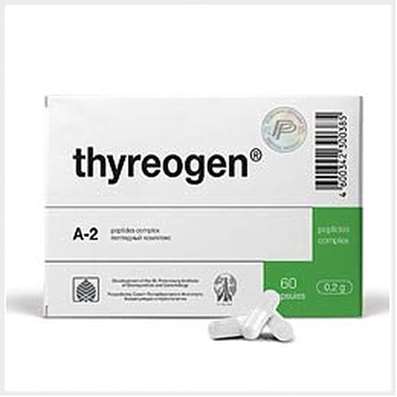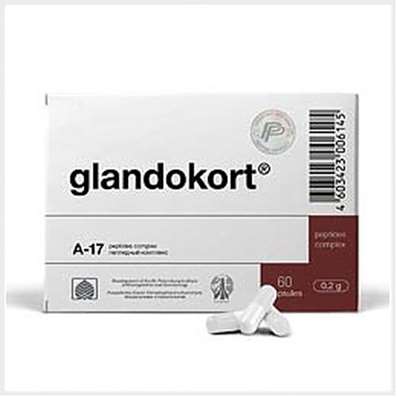Phenylpiracetam
27 Dec 2016
Phenilpiracetam (Phenotropil) is a nootropic agent Racetam family and as its name suggests, a phenyl derivative of piracetam. Phenylpiracetam, reportedly has a stronger neuroprotective effect than piracetam, but has psycho-stimulant properties and improves physical performance. There is a small number of studies showing that Phenylpiracetam effective racetam like other drugs, in reducing the rate and alleviating the symptoms of cognitive decline. Many of these studies Phenylpiracetam continued over one month and the beneficial effect observed may extend only likely organic cause cognitive decline (cerebral stroke and dementia) and not to the traumatic brain injury. There is only one study on rats found increased cognitive abilities in healthy young rats, and the study noted a beneficial effect only R-isomer (racemic mixture, which is widely implemented, is not greater than control). While that improve cognitive properties Phenylpiracetam in young subjects can not be eliminated, they may differ from the psychoactive properties (which are observed by the said racemic mixture and R-isomer).
Phenylpiracetam is also known as: Phenotropil, Carphedon, (RS) -2- (2-oxo-4-phenylpyrrolidine-1-yl) acetamide.
Phenylpiracetam should not to be confused with: Piracetam (parent molecule).
On a note! Phenylpiracetam is banned by WADA (Olympic Games) in connection with his psycho-stimulant properties and cold resistance.
Variety of Phenylpiracetam:
- Racetam
- Nootropics
Phenylpiracetam: instructions for use
Phenylpiracetam in a dose taken 100-200 mg for one time, and this dose is taken 2-3 times a day (total daily dose of 200-600 mg). A lower dosage range is not effective, but the optimal dose is not yet known. R-isomer is more active in respect of common use of Phenylpiracetam (stimulation and cognitive performance) than the S-isomer, and while the racemic mixture (commonly implemented version) is effective in reducing the cognitive abilities, there is no assurance that it acts as a nootropic agent in young subjects.
Sources and structure
sources
Phenylpiracetam (structural name (RS) -2- (2-oxo-4-phenylpyrrolidine-1-yl) acetamide, trade name or Phenotropil or Carphedon) is a derivative of piracetam having additional phenol group at position 4 of 2-oxopyrrolidine ring. It is reported (by the manufacturer), he quickly and fairly well absorbed due to the increased lipophilic and has a stronger antiamnesic, neuroprotection and stimulating effect than piracetam, also reported increasing physical performance and cold resistance, thereby Phenylpiracetam included in the prohibited substances list of the World Anti-doping agency (WADA, given as a 4-fenilpiratsetam carphedon or as a non-specific stimulator) . Phenylpiracetam is a derivative of piracetam, which is touted as more effective against antiamnestic action, and also has psycho-stimulant properties.
Structure
Phenylpiracetam is piracetam structure with additional phenolic group attached to the pyrrolidinone nucleus despite the spatial arrangement, characterized by phenolic groups substituted or nefiracetam aniracetam. In connection with the chiral fourth position pyrrolidinone ring, it can be represented as R or S isomer; clinically used form is the racemic mixture. Phenylpiracetam, as the name implies, is a piracetam with attached phenolic group.
Pharmacology
Serum
Injection of 100 mg / kg in rodents Phenylpiracetam demonstrate the half-life of 2.5-3 hours. 30 minutes after injection of 25 mg / kg Phenylpiracetam can be detected in the brain in an amount of 67-73 mg / g, in a later test, 100 mg / kg, it was observed that approximately 1% of the injected cerebral Phenylpiracetam reached. To date, there had been no pharmacokinetic studies on oral administration, but Phenylpiracetam is able to overcome the blood-brain barrier.
Neurology
Cognitive function
There is a lot Phenylpiracetam Research (given directly to this survey, four out of seven may be placed on the Internet), showing an improvement of cognitive function in people with decreased cognitive abilities due to organic causes, with one study noted a slight improvement in cognitive function in epileptic subjects ( young), unsuccessful results were observed in the study of traumatic brain injury in young. These studies used a dosage ranging from 200 mg (100 mg twice a day) to 600 mg (200 mg three times a day), all carried out for one month. Symptoms associated with decreased cognitive abilities, such as anxiety and depression were reduced according to the open-label studies, although studies evaluating asthenia (weakness, and one of the main reasons Phenylpiracetam destination), found no significant effect compared to control (light cranial trauma ). One study is not included in the above review, it noted improvements in function (physical and cognitive) in people suffering from apoplexy when Phenylpiracetam is taken at a dose of 400 mg daily for a year. The relatively large number of studies conducted in Russia (most of which are not available on the Internet in the West), and they support the use of Phenylpiracetam to mitigate or cure caused by organic causes of cognitive decline. To date, no studies on young subjects, who used Phenylpiracetam to enhance cognitive abilities, with beneficial effects observed in relation caused by organic causes cognitive decline, may not apply to physical injury (like Noopept, which has a beneficial effect). Only one study was conducted in healthy rats, and the R-isomer (non-racemic mixture) Phenylpiracetam in an amount of 1 mg / kg and 10 mg / kg improved the retention latency in the passive avoidance test at 195% and 185%, respectively. R-isomer may possess properties which increase cognitive ability. You can buy Phenotropil.
Depression and Phenylpiracetam
Depressive symptoms in the forced swimming test in rats were significantly reduced by 50-100 mg / kg Phenylpiracetam, while R-isomer was more active than the S-isomer. As for other studies symptoms of depression in people with decreased cognitive abilities are weakened in an open study by receiving 200 mg daily of Phenylpiracetam (100 mg twice daily). Although it is not well understood, Phenylpiracetam has antidepressant effect, which occurs due to the racemic mixture, but stronger at the expense of R-isomer in particular.
Psycho-stimulation and Phenylpiracetam
Rats were administered Phenylpiracetam, 10-50 mg / kg increased locomotor activity (distance and speed) that is associated mostly with the R-isomer, with no apparent dose response. A dose of 50 mg / kg is valid for about four hours with R-isomer, and the racemic mixture is valid for two hours. One study noted sleep disorders as side effects Phenylpiracetam in relation to psychoactive properties. Other studies have found no such side effects, and the reason why it was found in one study is not known. Although it is not well understood, there is some evidence that psychostimulant properties Phenylpiracetam cause worsening of sleep.
Inflammation and Immunology
Interventions
Injection 25 mg / kg Phenylpiracetam daily for five days in rats, and later injected with LPS for the immune system stimulation, revealed that lipopolysaccharide induced changes DTHR and phagocytosis were normalized without a significant impact on the production of antibodies. Behavioral changes due to injection lipo-polysaccharides (anxiety and low mobility) have been completely eliminated. Although it is not well understood today, Phenylpiracetam may have immunopodderzhivayuschimi properties during periods of immunological stress.

 Cart
Cart





